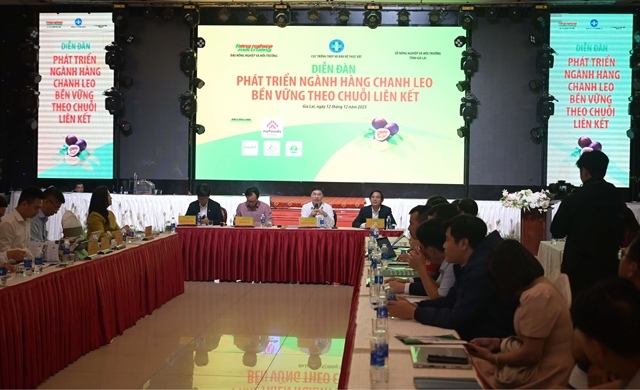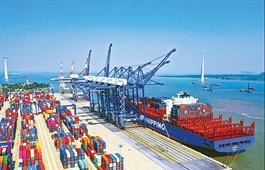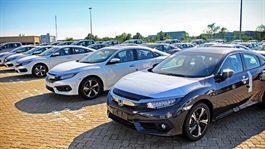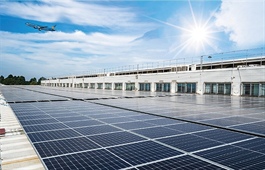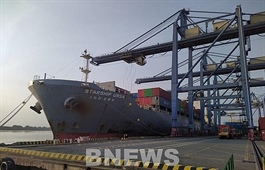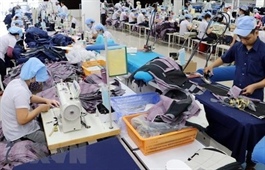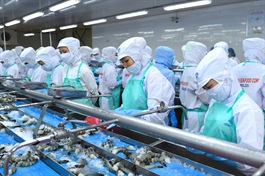Larger frame of mind for logistics
Larger frame of mind for logistics
Throughout more than three decades of economic reform, Vietnamese companies from many sectors have been venturing abroad and become role models. Yet, the logistics sector remains too focused on the domestic market. Tran Thanh Hai, deputy director of the Ministry of Industry and Trade’s Agency of Foreign Trade, emphasised that local players should follow regional examples and take their business to international arena.
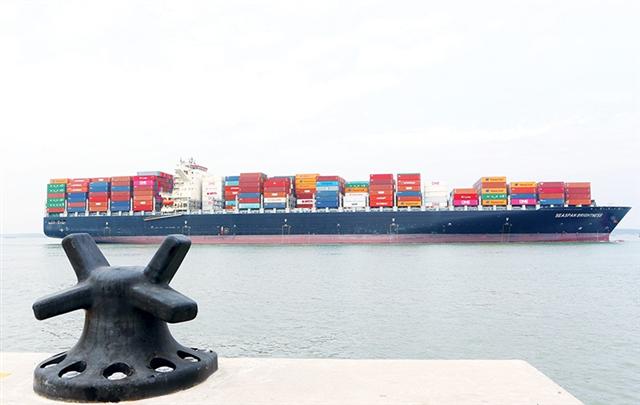
Larger frame of mind for logistics
|
Last year, the whole world suffered the consequences of the lasting pandemic, with even Vietnam facing economic uncertainties and natural disasters in the central region, causing huge damage to livelihoods.
In this context, logistics activities were affected significantly, with railways, roads, and air transport being the most heavily affected, while waterways and warehouses remained largely unscathed and even saw growing business due to rising inventory.
Different from five years ago, logistics have been given due attention by all state levels, as shown in the directive documents of the government, ministries, and branches, that all considered logistics a crucial aspect of the economy. From there, policy changes and significant investments in infrastructure could be accomplished, along with the easing of administrative procedures for businesses in this sector.
However, one of the current challenges is the lack of large-scale Vietnamese enterprises with influence in the logistics industry, while large foreign-invested enterprises (FIEs) such as FedEx, UPS, and DHL from the United States and Europe dominating the country’s logistics sector.
Weaknesses to remedy
In Vietnam, telecom, real estate, and manufacturing enterprises have built outstanding businesses that drive their respective industries. Within the logistics sphere, however, there is no such role model.
Companies like Saigon Newport, Gemadept JSC, Transimex JSC, and Sotrans Co., Ltd. are contributing their share but can hardly be called outstanding yet. The general picture of today’s businesses is stiffening, with competing FIEs operating in Vietnam, while those from other countries are integrating into global markets.
Additionally, the domestic logistics sector remains rather small with limited international operations, while this industry is really about going global and partaking in imports and exports. So far, the number of Vietnamese enterprises operating in foreign markets is also small, with even the bigger names not providing services to foreign markets. In the era of global integration, we must go to the world to develop, and thus this remains the Achilles heel of the domestic industry. Moreover, weak links with other service providers elsewhere have not been established and utilised sufficiently. Although Vietnamese manufacturers have been able to export goods to Europe in large volumes, there is no logistical presence of local companies.
As such, logistics groups stop all operations at Vietnam’s gates, after selling and delivering goods to customers, resulting in low added value and a lack of competitiveness against foreign counterparts.
Against this backdrop, the largest difficulties relate not to capital but to the awareness of Vietnamese entrepreneurs, who are typically shy in new environments, especially when confronting foreigners. Many businesses dare to run their operations but mostly focus on the domestic market as they feel that doing business in their own country is easier. Problems here can be handled the familiar Vietnamese way, while they would have to follow foreign rules outside and establish new personal networks and relations. Within the current logistics community, FIEs and state-owned enterprises are relatively stable, but the private sector consists mainly of small-scale businesses, with some newly established or separated from others.
In Vietnam, the number of FIEs is increasing constantly, with nearly 40 multinational corporations and many smaller ones present in the market. However, companies from Japan and South Korea are very ethnocentric and prefer to use the services of their country’s enterprises, which support and protect each other. Meanwhile, European and American businesses are somewhat more open-minded. They use traditional services but do not pay much attention to their partners’ country of origin. Multinationals have financial advantages, so it is easier for them to establish a foundation and attract high-quality human resources than it is for domestic ones. They also make great use of experienced CEOs.
The great advantage of FIEs is their cooperative relationship with partners worldwide. From these relationships, they provide most of the services requested by manufacturers at competitive prices. The service quality of these enterprises is often at a higher level than that of domestic ones, reflected in their professionalism, the assurance of standardised service quality, and strict rules and norms, which provide credibility for these businesses.
Those businesses also pay special attention to customer care and focus on the long-term benefits, instead of immediate returns. Therefore, at some stages, they even accept losses to win customers’ sympathy and build a reputation. Meanwhile, some Vietnamese businesses follow a fast-paced approach that aims for quick profits rather than long-term relationships and market presence. Such a mentality will also not pay attention to quality.
Models to follow
According to one of the prime minister’s decisions, it is a crucial task to form strong logistics groups and leading companies. Vietnam has a convenient location, with a long coastline, and the entire facade of the Southeast Asian peninsula serves not only as a service point for transit to and from China, Laos, Thailand, Cambodia, and Myanmar but is also a stopover transshipment point for major transports from Europe to Australia and from Northeast Asia to South Asia. Currently, the other regional countries take advantage of this though they do not have the same premises as Vietnam.
With a growth rate of 12-14 per cent per year, Vietnam’s logistics sector is growing, albeit merely gradually. It may take another 5-10 years to see strong differences today. As this speed remains slow, Vietnam’s logistics needs to go faster to avoid lagging behind other countries.
Up to now, Vietnam’s logistics growth has mainly relied on the scale of commodity production, consumption, and import-export, which are natural factors for growth advantages. However, these are not intrinsic factors of the logistics sector, they are just objective ones.
If one of these factors changes – such as COVID-19, natural disasters, and the declining domestic demand – the sector’s growth will suffer if it is not well established in foreign markets.
Thus, Vietnamese groups need to step out of their comfort zone, adapt quickly, and avoid thinking of themselves as small and inferior. Small does not mean weak.
At present, Vietnamese enterprises focus only on the domestic market, and give little thought to venturing abroad. Meanwhile, I am confident that Vietnam’s logistics can provide decent services to the regional market, such as Laos, Cambodia, and Thailand – all of which are close by and of similar development levels. Vietnam already has top enterprises in leather, footwear, steel, and automobiles. Thus, the logistics sector can build on their experience and develop leading groups from those sectors.
Singapore can also be a good example for Vietnam. Its government was determined to put all its advantages into developing the logistics sector and to turn Singapore into the largest transshipment port in the world. To do that, Singapore has largely sacrificed marine tourism. Nowadays, the island nation is housing some of the leading enterprises in logistics fields. It boasts PSA Co., Ltd., the world’s largest port operator, which also has a joint venture in Vietnam’s Cai Mep port complex in the south.
In the aviation industry, it has Singapore Airlines – a 5-star airline which for many years maintained its position as the world’s leading airline. Before the pandemic hit, Changi Airport was consistently one of the busiest airports in the world.
Another model is Taiwan, which has strong logistics development. Of course, there are also more developed economies like Japan or Germany whose level of development is already at a much higher level. The country needs it, the government needs it, and the businesses that want to grow strong also need to be bold and venture abroad with an outward-looking spirit. Vietnam opened its doors to global integration 35 years ago, but it is now up to businesses to step out or not. The government alone cannot do this.






